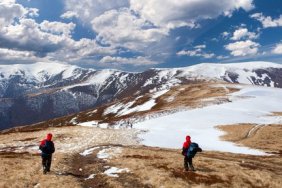 Believe it or not, the forecast in my neck of the woods is predicting snow tomorrow. To many, this seems a bit early for the white stuff to start falling, but winter can set in quickly in some regions of the country. That being said, it would be a benefit to many outdoorsmen to prepare for winter in the woods ahead of time, a big part of which means learning about some of the potential risks involved. One such risk is frostbite, and today we’ll take a look at some basic knowledge concerning this very real winter plight.
Believe it or not, the forecast in my neck of the woods is predicting snow tomorrow. To many, this seems a bit early for the white stuff to start falling, but winter can set in quickly in some regions of the country. That being said, it would be a benefit to many outdoorsmen to prepare for winter in the woods ahead of time, a big part of which means learning about some of the potential risks involved. One such risk is frostbite, and today we’ll take a look at some basic knowledge concerning this very real winter plight.
Frostbite sets in when the loss of blood circulation to your skin slows, causing your skin to freeze due to the loss of warm blood. More often than not, your fingers, toes, ears, and nose are the first places to be affected. Aside from these extremities, any exposed skin tends to be affected early on, but frostbite can still occur without direct exposure to the freezing air.
There are signs of impending frostbite that you’ll want to learn, especially if you plan to hike or spend time outdoors during Winter. For example, numbness and tingling in your extremities is usually the first sign. If treated early enough, frostbite is reversible. If not prevented or treated, an advanced warning sign of frostbite is when your skin turns white or grayish-yellow at the affected areas. At this stage, your skin may feel firmer than normal, or “waxy.” If you still don’t do anything about it, your skin will actually begin to die, leading to permanent damage, and may also require amputation. Even with these signs in mind, however, you need to keep in mind that you might not even notice that you’re getting frostbite, either because your skin is numb and you can’t feel it, or because the early signs are necessarily assured—not everyone gets them.
If you do notice signs of frostbite and you’re not able to get to a medical facility, there are some things you can do. First, seek any shelter or source of warmth right away. Try to warm your hands first by stuffing them in your armpits, or between your thighs. After your hands warm up, use them to warm your toes, ears, and nose, but don’t rub any affected areas too hard.
Some people think that hot water helps, but it’s actually better to go with warm water. In fact, never apply a hot object directly to your skin. Because frostbitten areas will most likely be numb, you could easily burn yourself without feeling it.
When you’re hiking in cold weather, just remember that exposed skin and extremities are high frostbite risks. Keep today’s tips in mind when you hit the snowy trails and you’ll be in good shape to prevent the onset of frostbite this Winter.








